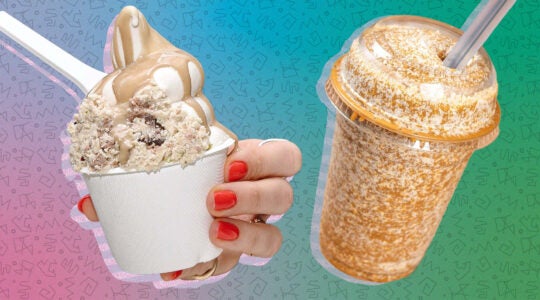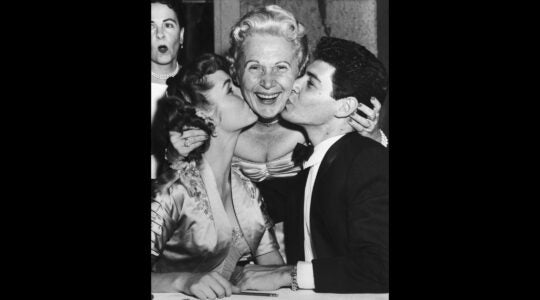The holiday of Shavuot, which occurs seven weeks after Passover and commemorates the time when God gave the Torah to the Jews on Mount Sinai, begins this Saturday night. A traditional way to celebrate this momentous event is by eating dairy foods, but how did it become a custom? What does receiving the Torah have to do with milk?
Surprisingly, a lot. The main reason for this minhag (custom) is that when the Jews received the Torah, they learned the laws of shechita (kosher slaughter) and the details of kosher meat. All of the Jews’ meat and pots from before the revelation were now rendered non-kosher, according to lore. This was before aluminum tins and Gladware were readily available, so the only option for hungry people in the desert was to eat dairy.
Rabbi Shraga Simmons on aish.com shares a more mystical reason behind the minhag. The gematria (numerical value) of the word for milk in Hebrew, chalav, is 40. The first letter, chet, equals eight; the lamed is 30; and the bet is two. Forty is the number of days Moses spent receiving the Torah from God. There were also 40 generations between Moses, who began the transmission of the written Torah, and Ravina and Rav Ashi, the rabbis of the Talmud who codified the final version of the oral Torah.
Keep those calculators handy: the Jews received the Torah on Mount Sinai, which is also called Mount Gavnunim. The Hebrew word for cheese, gevina, is related to the word Gavnunim, according to Rabbi Simmons. The gematria of gevina is 70 (based on the value of the gimmel, vav and nun), which corresponds to the Midrash’s interpretation that the Torah has 70 faces, meaning different levels of interpretation.
Shavuot traditions aren’t limited to dairy. With regard to food, many people make sure to eat honey and dairy, since Israel is described as “a land flowing with milk and honey.” Some people also eat kreplach, three-cornered dumplings filled with cheese, vegetables or meat that are symbolic of the three parts of the written Torah (Torah, Prophets and Writings). Another tradition is to stay up all night learning Torah, as the Jews overslept on Shavuot because of Satan’s intervention.
I always liked Shavuot, probably because cheesecake is one of my favorite desserts. As I get older, I like to imagine the Jewish women at the foot of Mount Sinai, digging firepits and assembling blintzes and cheese borekas. (You think they had cheesecake back then?) Also, the Book of Ruth, which we read on Shavuot, appeals to me because of the strong female protagonists.
As you bake the cheesecake recipe included below, make sure to remember that you’re not just eating it because it tastes good — there’s also religious significance in every bite. Since my mother, Susan Hollander, has been making this for Shavuot ever since I can remember, it’s also steeped in tradition. Have a joyous and delicious Shavuot.
RECIPE:
Cherry Cheese Goodness (from the kitchen of Susan Hollander)
9-inch unbaked piecrust
1 can of cherry pie filling
1 tub of whipped cream cheese
1/2 cup sugar
2 eggs
1/2 tsp. vanilla extract
8 oz. sour cream or whipped cream
1. Bake piecrust with half of the cherry filling at 425 degrees for 15 minutes.
2. Beat the remaining ingredients together in bowl.
3. Pour over the hot cherries.
4. Bake for 25 minutes at 350 degrees.
5. Let cool in the oven.
6. Pour the remaining cherry filling on top of the cooled pie.
7. Garnish with sour cream or whipped cream as desired.
The New York Jewish Week brings you the stories behind the headlines, keeping you connected to Jewish life in New York. Help sustain the reporting you trust by donating today.




